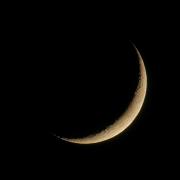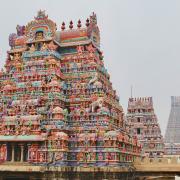
Christmas is right around the corner and it’s time to get festive! Reflect back on all the christmas’ you’ve had, the whole family squeezed around a table for 6 which has now magnificently catered for 20. Or the excitement of december 1st rolling round, and it was now acceptable to douse the house with tacky tinsel and sparkly lights. But, the most memorable time for many, is the grand tree decorating ceremony. It’s anticipated all through November and when the time comes, it’s mandatory you find the Pinterest perfect tree that will stand tall in your home. The tree is an essential item when celebrating Christmas, it sets the tone for the festive period and in due course allows you to express yourself and transform into a professional tree decorator. As well as this, it brings the family together, recognising the importance of coming together and being appreciative of one another. This tradition runs deep and Christmas trees are a special sentiment to family and the close knit relationships you have the privilege of experiencing. However, there’s one thing that differs from household to household across the globe, and that’s whether you have a real Christmas tree or an artificial one. It may be pointless to dwell on such a thing but there are plenty of reasons why you should be conscious of your tree choice this year.
The National Christmas Tree Association states that “Christmas tree farms stabilize soil, protect water supplies and provide refuge for wildlife while creating scenic greenbelts.” Firstly, this sets real Christmas trees up one point for their sheer improvements to the environment. It’s recorded that more than 1,000,000 acres of land have been planted to Christmas trees and with the statistics that one acre of christmas trees produce the daily oxygen requirement for 8 people, that translates to oxygen for 18 million people everyday. Moreover, christmas trees continue to create a sustainable environment whereby throughout their lifetime remove dust and pollen from the air, but after being recycled they are used as sand and soil erosion barriers, as well as being placed in ponds for fish shelter. With 98 percent of Christmas trees grown on farms this creates job opportunities for people. According to the National Tree Association, the industry employs over 100,000 people. A staggering 8 million trees are sold each year in the UK and the natural christmas tree market is worth approximately £384m, contributing massive amounts to the economy. Real Christmas trees don’t only contribute to the environment and the economy, but socially have an impact. The University of Surrey in the UK also suggests “There is a lot of evidence that people recover more quickly from stress and mental fatigue when exposed to nature, as opposed to built-up and ‘fake’ environments.” Therefore, having a Christamas tree in your home is supposedly meant to have a calming effect inside the household. Which is all you ever want, a stress free Christmas. But it’s not always that easy and with every positive comes a negative. With all these advantages of buying a real christmas tree, it’s hard to ever consider the disadvantages, but for some these may be relevant.
The cost of buying a christmas tree each year is a disadvantage, with a 5-6 ft costing around £60, this could be a large sum of money for a family with a potentially low income. As well as this, people have allergies related to trees, meaning they’d spend the festive season sneezing if they had one in their homes. And finally, real trees need to be watered throughout the holiday season and according to the National Christmas Tree Association can use as much as one gallon a day. Not only this, but christmas trees are known for barbouring bugs, being a fire hazard and not to mention the continuous hassle of sweeping up the needles that have now made their way around you home. They’re impossible to successfully clean, with a few popping up here and there even in May the following year!
Now onto why artificial christmas trees are a worthy competitor in the fight for the right Christmas tree.
Artificial trees are made from petroleum products, which are non-renewable and contain multiple plastics and metals. These trees cannot be recycled and are ultimately destined for landfill. As well as this, most artificial trees are made overseas. According to The Carbon Trust a real Christmas tree has a significantly lower carbon footprint than an artificial tree. Whilst a two metre tree with roots has a carbon footprint of around 3.5kg of CO2, a two metre christmas tree made from plastic has a carbon footprint measuring at around 40kg of CO2, more than 10 times greater! Moreover, artificial trees can be a fire hazard- with several reports of pre-lit trees catching fire due to a blaze sourcing from the tree’s firebox at the base of the tree. After listing these disadvantages you may never consider an artificial christmas tree ever again, but there are still some things to think about. For example, artificial trees are much more convenient and less time consuming. With technology developing, it;s now possible to buy a fully decorated tree that takes less than 5 minutes to assemble and here you have it. Where’s the fun in that? BUt for some, that sounds like a dream. Continuously, people end up saving lots of money over the years and the best advantage of them all, no mess, no needles, no watering and no bugs!
With all this being said, it’s all about the memories you make during the Christmas period and the precious time spent with family and friends. Although circumstances are different this year and you’ll likely be stuffing your face with turkey over Facetime with your friends, it’s always important to be thinking about your impact on the world over this period. Whether you’re opening your presents under a 6ft Noble fir or a Pencil Thin Pine from the local Sainsbury’s, it’s the memories that last forever. But just to be conscious this Christmas, spare a thought for the different ways in which you can make this Christmas as environmentally friendly and as safe as possible.



























